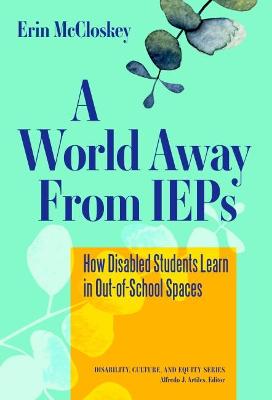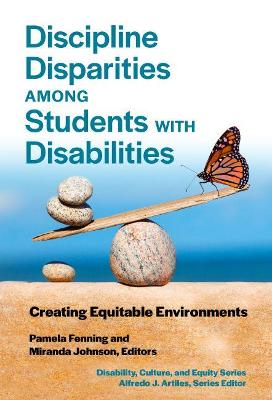Disability, Culture, and Equity
2 total works
Step outside of the IEPs and behavioral paperwork currently generated in schools, go where disabled people are thriving today, and see the results in learning, growth, and expression. This authoritative book offers readers alternative ways to think about learning and behavior in special education. Through illustrative case studies and a disability studies lens, author Erin McCloskey uses the voices of people with disabilities to show how these students progress creatively outside the classroom and school building—at the dojo, the riding arena, the theater stage, the music studio, and other community-centered spaces where disabled students can make choices about their learning, their bodies, and their goals. Balancing theory and practice, the book describes alternative learning spaces, demonstrates how disabled students learn there, and passes on the important lessons learned in each space. The ideas apply to students of all ages with a wide variety of disabilities.
Book Features:
- Uses the voices of people with disabilities to promote alternative ways to think about learning and behavior in special education.
- Presents rich case studies and briefer interludes to illustrate how disabled students are learning and thriving in surprising ways outside of school where they have opportunities to explore.
- Distills important key takeaways from each case study through chapter sections of “lessons learned.”
- Promotes informed discussion of the concepts in the book with questions at the end of each chapter.
- Combines theory and practice to help readers put the concepts into action in a variety of settings with a variety of disabled students.
Book Features:
- Explores how students' disabilities, race, ethnicity, and gender intersect to explain how they are negatively impacted by the overuse of suspension, expulsion, and school policing.
- Focuses on practical changes to the approaches of research, practice, and policy to remedy this long-standing problem.
- Presents an interdisciplinary approach, bringing together the expertise of scholars, attorneys, and educational practitioners to address the issues from a variety of perspectives.
- Draws on DisCrit (Disability Studies and Critical Race Theory) to explore the intersection of race and ethnicity, particularly among students who are Black or from a Native American background and are considered "disabled."

